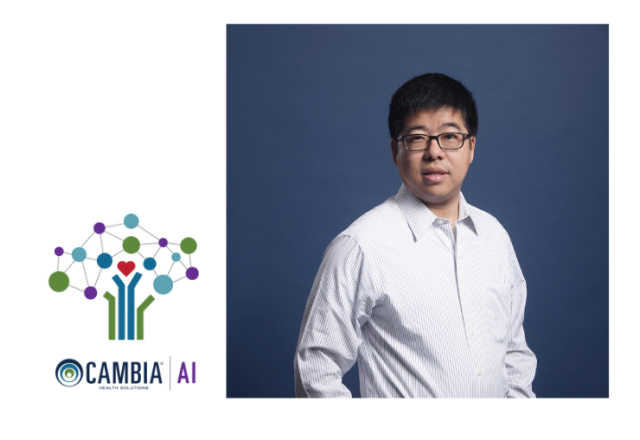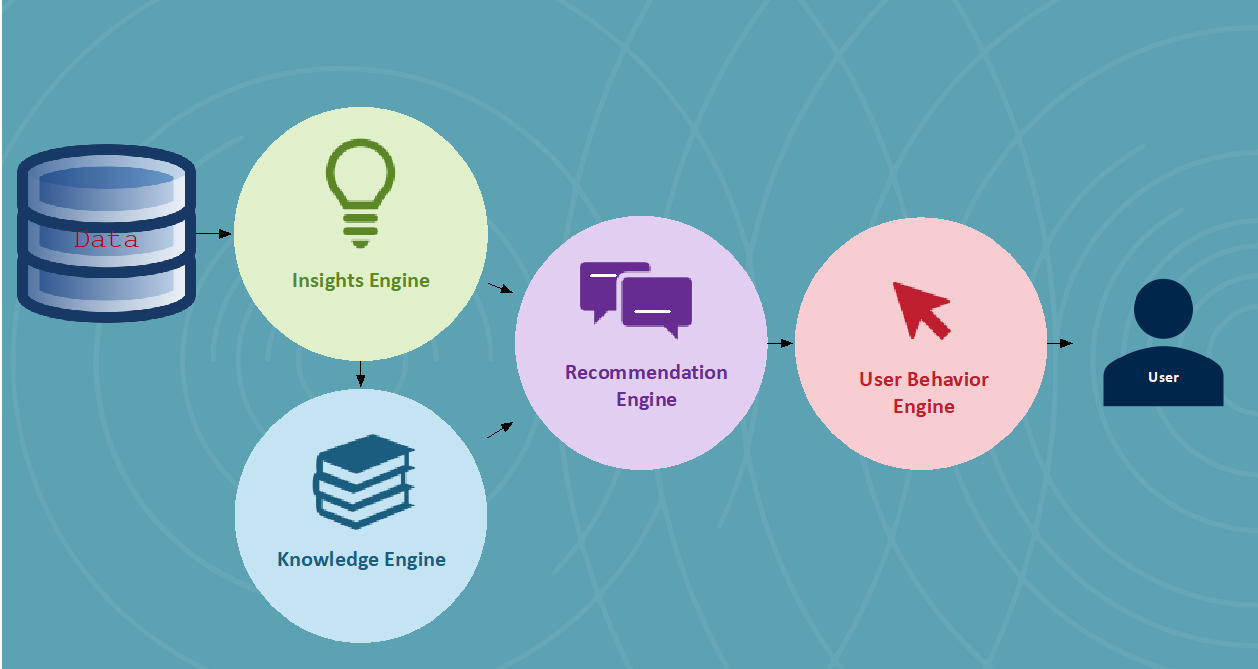
By Lin Chen, Director, AI Engineering, Cambia Health Solutions
Health care is complicated, and everyone is different. At Cambia, we are applying AI to help each person we serve navigate through their unique health journey.
One of our approaches to person-focused health care is to provide actionable insights and recommendations – tailored to individuals based on where they are in their health care journey. We’re doing this through a personalization engine.
For a personalization engine to be truly useful, it must include all these five pillars:
- Relevant: Provide the right and relevant information for each person
- Smart: Use knowledge in an intelligent way; infer beyond the obvious
- Knowledgeable: Have a database of facts and insights to back up decisions
- Flexible: Able to fit different use cases, scenarios, and clients; can inject various data sources and third-party insights and recommendations
- Timely: Provide information at the right time
Personalization Engine Components
To achieve the five pillars systematically, we decouple the personalization engine into four logical system components: Insights Engine, Knowledge Engine, Recommendation Engine and the User Behavior Engine. Figure 1 shows how these components interact with each other.
- Insights Engine is the first contact with the raw data and is responsible for understanding the data and generating facts and insights. It generates insights using various analytics approaches, including internal and external services. For example, the Insights Engine infers conversation topics in customer service chats and phone calls. The insights generated are stored in the Knowledge Engine.
- Knowledge Engine manages facts and insights we have learned about people and about the entities related to them. Behind the Knowledge Engine is a Knowledge Graph implementation. It models every aspect of the health care entities as nodes, e.g., people, providers, specialties, drugs, and benefits. The relationships among these entities are modeled as edges in the graph. The knowledge comes from the Insights Engine, as well as the knowledge inferred within the knowledge graph. For example, when we get a pharmacy claim, we create a relationship from the person to the drug to indicate the person is using that drug. The Insight Engine might tell us that drug has a side effect, so we can use the Recommendation Engine to generate a reminder about that drug side effect to the person.
- Recommendation Engine takes the output from Insights Engine and Knowledge Engine to generate actionable insights and recommendations for each person. Various recommendation techniques are being used, e.g., using collaborative filtering to generate recommendations with learning from “people-like-you”; using predictive models to determine whether a person needs a dental cleaning in the next 90 days for example. The output of the Recommendation Engine is further processed by the User Behavior Engine before being served to the end user – our consumers.
- User Behavior Engine predicts a user’s behavior or system usage propensity. The User Behavior Engine determines what recommendations are most prevalent and use such information to filter and sort the recommendations generated from the Recommendation Engine.
With these four components, when a person’s data changes, insights and recommendations are pushed directly to users for timely delivery of relevant recommendations, or available for the user to pull when needed.
While building the personalization engine is a software system engineering process, AI has been applied at every aspect to make it more relevant and smarter. Predictive models are used in the Recommendation Engine to generate actionable insights. They are also being used in the User Behavior Engine to predict how likely a user will act on the recommendations. More importantly, the Knowledge Graph acts as the brain of the personalization engine to power smarter recommendations.
Health care that’s easy, personalized and there for you – wherever you are on your journey – is at the heart of what we do at Cambia Health Solutions. Building the personalization engine is one step in applying AI to power such a journey.
